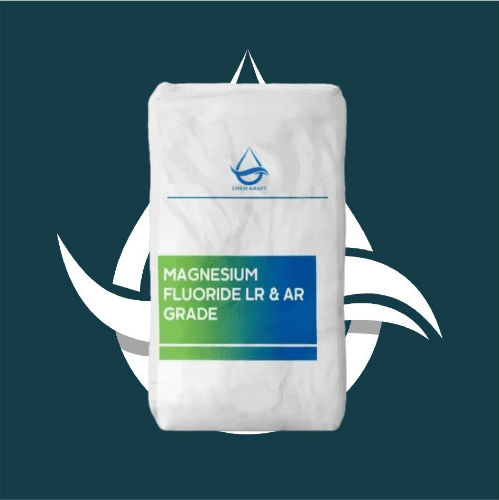Mangnesium Fluoride
MgF2 CAS NO.:7783-40-6
Molecular Formula: MgF2
Mol. Wt: 62.31
Cas No.: 7783-40-6
EINECS: 231-995-1
Description: Colorless crystal or white powder.
Solubility: Soluble in nitric acid.slightly soluble in diluted acid, hardly soluble in water and alcohol
Boiling point: 2227 °C/1 atm (lit.)
Relative density: 3.148 g/mL at 25 °C (lit.)
Regular package: 25 kg woven bag with inner plastic bag, or according to customer’s requirements
Transportation: Not dangerous goods, Hazard class: N/M ; Package group: N/M, UN No.: N/M

Magnesium fluoride (MgF2) is a chemical compound widely known for its various applications across multiple industries. It is an inorganic salt composed of magnesium cations (Mg2+) and fluoride anions (F-). In this essay, we will explore the formula and applications of it.
The formula for magnesium fluoride is derived from the combination of one magnesium ion with two fluoride ions. This results in a balanced compound that is electrically neutral. Its chemical formula, MgF2, gives important information about the molar ratio of the elements present, as well as the overall charge of the compound.
Applications
One of the most significant applications of this chemical is in the optical industry. Its unique properties, such as its high transparency to ultraviolet (UV) light and its low refractive index, make it an ideal material for optical coatings. Magnesium fluoride can be applied as a thin film on lenses, mirrors, and filters to improve their performance and reduce unwanted reflections. Moreover, its excellent resistance to abrasion and scratches ensures the long-term durability of these coated optical components.
Magnesium fluoride also finds wide use in the production of specialty ceramics. Due to its low thermal expansion and high melting point, it can be incorporated into ceramic materials to enhance their strength, stability, and resistance to heat. The compound acts as a flux, accelerating the sintering process and improving the densification of ceramic particles during fabrication. This results in the production of high-quality ceramic products, such as cutting tools, crucibles, and high-temperature insulation materials.
Other applications
In the field of metallurgy, magnesium fluoride is utilized as a flux for aluminum and magnesium alloys. Its addition during the melting process helps to remove impurities and improve the flowability of molten metals. This fluxing action ensures the production of high-purity alloys with enhanced mechanical properties. Magnesium fluoride is also used to protect metal surfaces from oxidation and corrosion, thereby prolonging the lifespan of metallic structures and components.
Moreover, it plays a significant role in the production of optical fibers used in telecommunication systems. It acts as a dopant to modify the refractive index of the fiber core, enabling the transmission of light signals over long distances. This characteristic makes magnesium fluoride an essential component in the manufacturing of efficient and reliable fiber optic cables, which are indispensable for modern communication networks.
In conclusion
magnesium fluoride (MgF2) is a versatile compound with a wide range of applications. Its chemical formula reveals the balanced arrangement of magnesium and fluoride ions, ensuring its stability and neutrality. Its exceptional properties make it highly desirable in the optical, ceramic, metallurgical, and telecommunication industries. Due to its high transparency, low refractive index, resistance to abrasion, and fluxing abilities, this chemical is relied upon for its contributions to the production of optical coatings, specialty ceramics, high-purity metals, and communication fibers. With its diverse applications, magnesium fluoride continues to play a pivotal role in several technological advancements.


